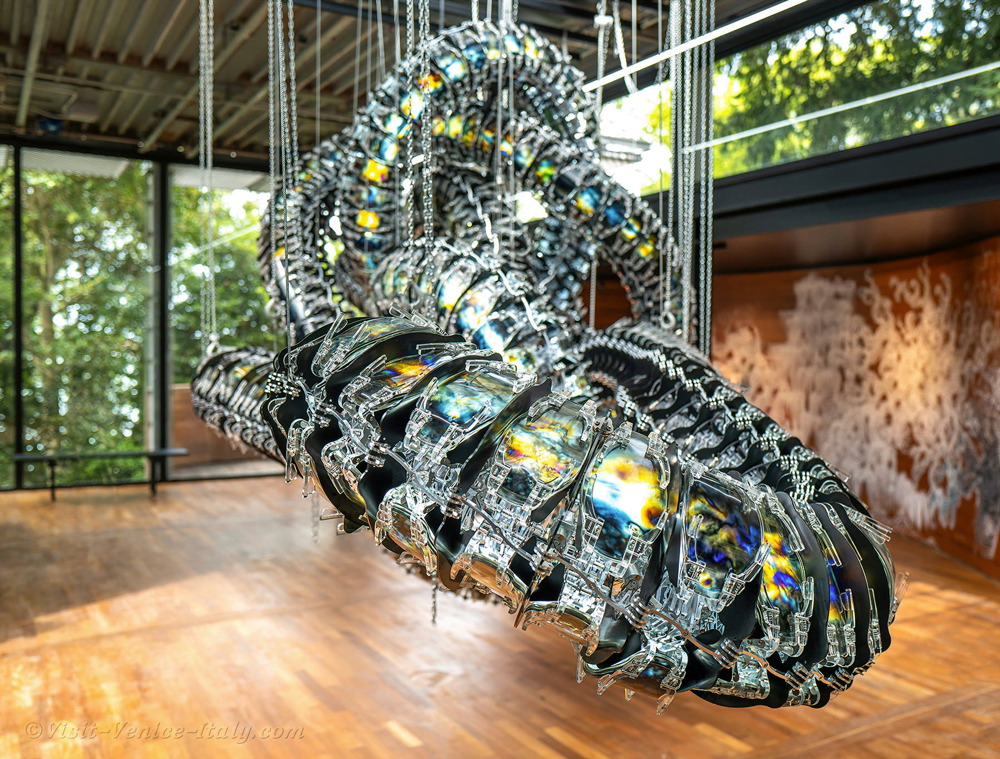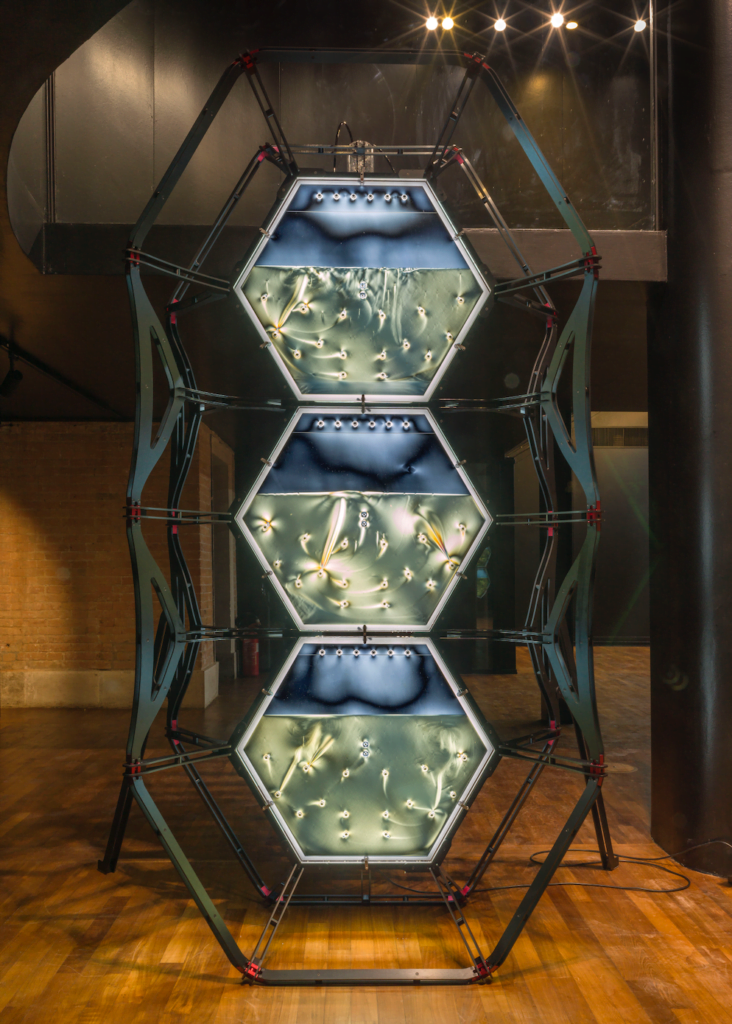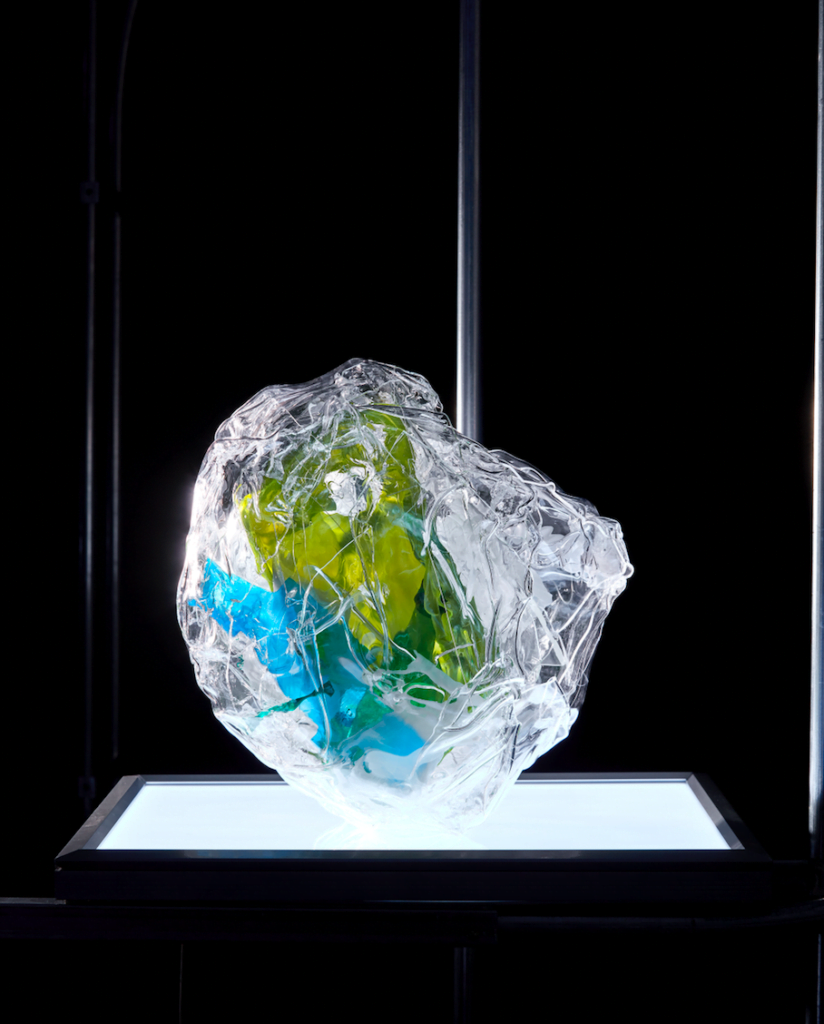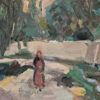Barakat Contemporary Presents: Yunchul Kim, Chung Seoyoung, and Sojung Jun
1 December – 17 December 2022
No. 9 Cork St. Gallery
9 Cork St
London
W1S 3LL
Opening Day – 1 December 2022
16:00 – 18:00 Artist Talk Chung Seoyoung (Artist) with
Chus Martinez (Director of FHNW Academy of Art and Design, Basel)
18:00 – 20:00 Opening Reception
Barakat Contemporary is pleased to present three distinctive solo exhibitions of Korean Artists, Yunchul Kim, Chung Seoyoung, and Sojung Jun at No. 9 Cork Street, London.
Yunchul Kim (b.1970), Chung Seoyoung (b. 1964), and Sojung Jun (b.1982) are pioneers who are actively shaping the discourse around Korean contemporary art since the 1990s to the most current, dealing with urgent topics and innovative technologies.

Hydrogel, acrylic, LED, 245 x 142 x 135 cm
Courtesy of the Artist, Photograph: Studio Locus Solus
Yunchul Kim has shown the potential for imagining and creating a different kind of reality beyond the realm of human experience, based on his explorations into the essence of materials as the foundation of all things. His artistic body of work is a journey through a dynamic world of undulating light and flowing materials, and it also represents the moment where physical properties of matter, usually suspended and unseen, become manifest in new ways through a sense of their depth. Kim refers to this as the “world of materials” – a universe perceived as an embodied, physical precursor of linguistic expression, one in which humans, objects, materials, and matter interact in active entanglement.

LPDS solution, acrylic, motor, microcontroller, 260 x 150 x 100 cm
Image Courtesy: Korean Pavilion at the Venice Biennale Arte 2022, photograph by Roman März
La Poussière de Soleils (The Dust of Suns) (2022), a nod to French poet Raymond Roussel’s play ‘La Poussière de Soleils (The Dust of Suns)’, is a living sculpture that merges the artificial and natural. Made of vermiculite, this novel material created by the artist shows a kaleidoscope of colours that is only visible through specially fabricated lenses. Discreetly connected to devices, microcomputers and software, the installation controls the wavelength and conviction of light in relation to its own density.
Chung Seoyoung played a leading role in transforming the Korean art scene into a venue for contemporary art in the 1990s. Among the artists responding to the society in flux with fresh attitudes and new spirits, Chung stood out with her sculptural investigation on the byproducts, which the artist refers to as “social evidence”, that came from the rapidly reorganizing structure of Korean society. Through her practice, the distinctive presence of these objects in the context of the country’s industrialization is often resolved and revealed by traditional methodologies of sculptural practice.
In using the commonly found industrial materials such as styrofoam, linoleum, plastics, sponges, and plywood, Chung exposes their material properties in their rawest state while presenting a form full of implications. As a result, her sculptures carry radical and commanding agencies of their own.
From the mid-2000s, Chung focused on revealing the immaterial elements inherent in objects and expanded her artistic vernacular beyond sculpture, installation, and drawing to include performance, video, and sound. She continued to pay attention to the constantly renewed sociological conditioning of objects by examining their evolving relationship with the world, both internal and external. Chung’s contemplation on the language object relationship, multiplicity of sculptural practice, and transformation of an object into an artwork continues to expand the definition of matter and material.
In the solo display, Chung explores the relationship between objects and sculpture that extends from the changed status of objects in the world by implementing sculptural acts of casting, assembling, and balancing, to various materials such as vegan leather, bronze, wood, cement, and jesmonite.
Through these sculptural attempts, Chung Seoyoung presents sculptures as a place that encompasses space and time that cannot be grasped by images solidified as material. The artist actively visualizes the unknown area, which unexpectedly protrudes from the combination of objects that are seemingly unrelated or cannot be accessed through the existing semantics, while prompting the autonomous aesthetic language of sculpture.

Image Courtesy: Fondation d’entreprise Hermès, Photograph by Sangtae Kim
Using the language of video and writing, Sojung Jun is interested in creating a nonlinear space-time to awake a new awareness of history and the present or in how the changes made in physical boundaries penetrate daily sensorial experiences.
In particular, she has produced works that weave and crisscross with her personal experiences by paying attention to people standing on the boundary amid the ruins of modernity and invisible voices. She has newly established what she has fragmented through interviews, historical materials and narratives appropriated from classical texts, and carries out experiments intersecting personal, psychological and aesthetic factors with political ones in life.

Image Courtesy: Fondation d’entreprise Hermès, Photograph by Sangtae Kim
Based on the early poem ‘Au Magasin de Nouveautes’ by Yi Sang, a representative avant-garde of modern Korea in the early 20th century, the video work Despair to be Reborn (2020) attempts to rupture reality by intersecting different spatio-temporalities: contemporary and modern Korea. In the poem, Yi Sang observes the Mitsukoshi Department Store, built in Gyeongseong under colonial rule. Looking around this symbol of ‘imitation modern’, the poem probes at modern Seoul in its transformation into a capitalist space, the striding crowd through the city, as well as the ambivalent reality induced by modern civilization, with perplexing codes and multiperspectivity.
The video piece is a non-linear montage consisting of footage filmed by the artist in Seoul, Paris, and Tokyo, and appropriated clips from TV documentaries and films. The de-perspective camera angles, the mechanical body movement of the Parkour performer who slides across Seoul and Paris compressing the cities’ spaces and time, and the concerto of harp and gayageum that heighten tension, all together maximize various bodily sensations. The installation structure, which unfolds around the video functions as a kind of a labyrinth, a modern passage, an airplane runway, or a showcase at a department store.
A viewer may watch the video and look at the sculptures while strolling through the architectural structure as if one is looking at the products showcased in a mall. Every piece exists independently, stirring up various senses of the body; on the other hand, an intimate relation between them can also be conjectured. Sojung Jun’s video work, sculpture, and installation bring to light an imitation-driven modernity in a Japanese-style department store mimicking a French one, and subtly juxtaposed with Yi Sang’s poetry, which conjured up ways to flee from the ‘imitation modern’, the works renew one’s awareness of reality and history.
The three artists: Yunchul Kim, Chung Seoyoung, and Sojung Jun, presented by Barakat Contemporary at No. 9 Cork Street, are all significant Korean artists who have constructed their own distinctive worlds, working with disparate media.
Through the unique exhibitions of Yunchul Kim, who develops new materials, Chung Seoyoung, who hones in the medium of sculpture by exploring diverse materials, and Sojung Jun, who experiments with the moving image’s expressive potential of multifarious sensations of the body–in particular, the sense in which time is operated via the act of contracting space–Barakat Contemporary calls attention to the dynamic course and diversity of Korean contemporary art.
©2022 Barakat Contemporary, Yunchul Kim, Chung Seoyoung, Sojung Jun





